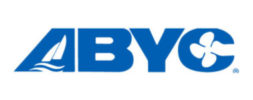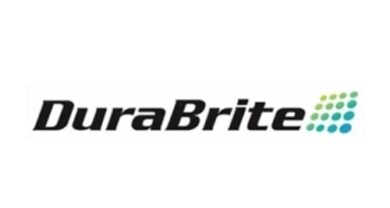Brunswick sees little boat market growth in 2003
Even though Brunswick Corp., reported higher engine and boat sales revenue during the first three months of this year, the company has forecasted a flat boat market for the full year 2003 according to George Buckley, chairman and chief executive officer.
During a conference call with investment analysts on April 24, Buckley outlined that Brunswick will increase boat production in Mexico and small marine engine production in Asia to lower its labor costs and thus improve its profitability.
Although the war in Iraq ended quickly, interest rates were low and fuel prices were trending down, Buckley said.
“Overall, the U.S. economy appears to be going sideways,” he explained. “So, we are going to be cautious about both our spending and our sales for a while.
“However, we are not expecting a meltdown of the U.S. economy or, for that matter, of the recreational boating market. We may not see much growth in 2003, but we’re not expecting Armageddon either.”
A bright spot
During the first quarter, when worries about the Iraq war had a chilling effect on consumers, Buckley said retail sales of all of Brunswick’s products, which includes Mercury Marine engines and several boat brands, as well as exercise equipment, billiard tables, bowling alleys and bowling balls, declined between 15 and 20 percent, when compared with the first three months of 2002.
However, Brunswick’s boat business was a bright spot because its sales revenue increased 7 percent to $378.6 million “while our operating margins roughly quadrupled year-over-year from 1 percent to 4 percent, and we expect that upward margin trend to continue now as the year unfolds,” Buckley said.
Brunswick’s boat division earned a total of $14.1 million from operations during the first three months of this year, more than quadruple the $3.3 million it earned from operations during the first quarter of 2002.
At Sea Ray, sales increased 9 percent during the first quarter and at U.S. Marine, manufacturer of the Bayliner, Maxm, Meridian and Trophy brands, sales revenue increased 4 percent, and the number of units shipped from factories to dealers soared 34-percent higher, Buckley added.
Entry-level boat takes off
The entry-level Bayliner 175 model, which was introduced during 2002 and is produced in Reynosa, Mexico, has been hugely successful, Buckley said.
The 17.5-foot boat carries a suggested retail price of $9,995 including engine and trailer. As of late April, Brunswick’s dealers had sold around 4,000 Bayliner 175 units and Buckley added, “I can confirm that a second slightly larger Bayliner boat in this low-cost, high-margin series will be released in June to add to the production volume in Reynosa.
“It is our goal to have not less than five units in this low-cost, high-margin series by the end of 2004, which will require building of a second new-boat plant in Mexico sometime next year,” he continued. “Please remember also, this project is not just about making and selling boats. Consider that with each one of these boats, we also sell an engine. Our dealers also make lots of money on these boats. Moreover, now that we’re well past the breakeven volume, the margins on these boats for us are significantly better than on the ones we traditionally have made here in the U.S.
“We believe that by the end of the calendar year, we will have a run [production] rate of about 8,200 boats coming out of this one plant [in Reynosa per year].”
Despite the first-quarter increases, Bruns-wick’s boat-building operations still were operating at rates 20- to 40-percent below the industry’s “cyclical peak in the year 2000,” said Vicki Rieck, the company’s chief financial officer.
Mercury faces long struggle
Meanwhile, Brunswick’s engine business, which includes Mercury and Mariner outboards along with MerCruiser sterndrive and inboard engines, faces a long struggle to improve its profitability.
During the three months ended March 31, Brunswick’s marine engine sales revenue increased 11 percent to $412.8 million, but its operating earnings declined 22 percent to $19.3 million.
Brunswick’s engine business faces its biggest challenge in the U.S. outboard segment, according to Buckley.
“Mercury sterndrive sales were very robust in the first quarter, and unit volume increased by about 3 percent over last year,” he said. “Moreover, international sales for Mercury were also good in all product segments, with sales up 17 percent.
“Domestic wholesale outboard unit sales fell 2 percent in the year-over-year quarter, so our challenge here is purely a domestic outboard-business-related one.”
The challenge to improve outboard engine profitability will be of a long-term nature, Buckley believes. “As many of you know,” he said during the conference call, “so far it’s been impossible for us to recover investments and higher costs in the outboard segment of our business as we shift our mix from classic carbureted two-strokes to lower-emission, direct-injected two-strokes or four-strokes. This mix shift has cost us more than a full (percentage) point of margin loss.
“We do expect this will abate somewhat when Mercury launches [at low volumes this summer] its new [Project X high-horsepower] four-stroke products,” he said. “These new engines will be the Ferraris and Porches of the marine business and we expect they will trade for a premium for quite some time, benefitting not just us, but our dealers, as well.”
Taking corrective actions
Near term, there was “a flood of Japanese-made outboard engines” that were brought into the U.S. prior to last year’s West Coast longshoreman’s strike that were “flooding the market” as of late April, Buckley said.
Additionally, a “U.S. manufacturer” was forced by competitive pressures “to sell outboard engines sometimes at huge discounts,” according to Buckley. “We think that this will bleed out of the system in the next quarter or so, and we have corrective actions being worked on now which I’m not going to telegraph to the competition.”
But Buckley admitted Brunswick “lost some domestic wholesale share” as a result of fierce price competition during the outboard market glut early this year.
Here are some other highlights of Buckley’s report to the Wall Street analysts in late April:
- Mercury introduced its new three-cylinder, direct-injected OptiMax two-stroke outboard engines last month. Buckley described the new OptiMax models as “beautiful new engines sized in the 75- to 115-hp range with fuel economy and performance even better than comparable four-strokes, ours or anybody else’s included.
“They also are lighter in weight and have better torque,” Buckley continued. “They will add considerable power in our lineup in this important size segment that is growing the fastest. This will be especially important internationally, where fuel costs are much higher than domestically and the off-shore applications, where cruising range is an important factor.” - Brunswick is committed “to moving the manufacturing of small commodity engines to Asia where we’ve been building capability and sourcing components for some time now,” Buckley said. “We expect to have sizable pieces of this work completed in the next 12 to 18 months or so. And in our view, we have no choice but to do this if we are to remain competitive in the small-engine business.”
- Concerning boat production technology, Buckley said, “We continue to make good progress in closed-mold manufacturing of boats. We’ve now made about 1,200 boats with this process and we’ve finished development and proving our pre-formed blanket process, and it is now the standard method for the manufacturing of these boats. I think you all know we believe this kind of zero-emissions manufacturing to be the longer-term future of boating.”
- Concerning Bombardier Corp.’s plan to sell its Recreational Products Division, which includes Johnson and Evinrude outboard engines, Buckley said, “If you’re in the dealers’ shoes, you’re bound to be wondering if this is a tempest or a typhoon and what you ought to do about it.” Consequently, Buckley believes, “There’s some (market) share gain opportunities we intend to seize and take advantage of.”




